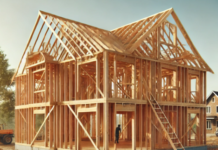Give Your Trees The Nutrients – Beautiful, full trees provide shade during the hottest parts of the day. Their presence in your backyard can lower your air conditioning bills and help create an oasis in your garden. However, when a tree near your home gets sick, its removal can be an unwanted expense. So what can you do to ensure the trees in your backyard continue to thrive for years to come? Here are a few tips about tree fertilizer. Giving your trees the nutrients they need is an easy way to help maintain them.
Soil nutrients
In a perfect world, your trees will simply take the nutrients they need from the nearby soil. Unfortunately, it doesn’t always work that way. Soil contains macronutrients like nitrogen, phosphorus, potassium, magnesium, calcium and sulfur. But when the soil is deficient of one of these critical nutrients, your trees may be more susceptible to disease and insect problems.

Trees that don’t receive the right levels of nutrients will also struggle to reach their full growth potential and likely have shortened lifespans. By using fertilizer, homeowners can help ensure their trees are getting the nutrients and macronutrients necessary, but how do you know whether your trees need a little fertilizer assist?
Soil testing and tree appearance
Many county extension offices offer soil testing services. These agricultural experts can examine your soil to determine what macronutrients are needed to maximize tree growth and health. Experts recommend testing soil before planting a tree, but if your backyard is filled with mature trees planted long before you arrived, an extension office can still test your soil and let you know what type of fertilizer will provide exactly the right mix of nutrients for your trees. Experts also recommend having the soil near your trees tested every 3-5 years.

A tree’s appearance is another way to determine whether fertilizer is necessary. If the tree’s leaves are yellow or off-color, that may indicate the tree is hungry for some nutrient it’s lacking. A soil test can narrow down exactly which nutrient is necessary. You can also track shoot growth on established trees. If shoots from the tree in the current year are more than 6-inches, your tree is probably healthy and you can forego using a fertilizer. If shoot growth is between 2 and 6 inches, the need for fertilizer is debatable. However, if shoot growth is less than 2 inches, this is a pretty good signal that the tree is lacking some nutrient. Slow shoot growth typically means your tree needs nitrogen.

When to fertilize?
Most trees grow in a burst in early spring and then growth slows through summer and fall. Knowing this, the best time to fertilize most trees in early spring before the burst of growth takes place. However, if you notice that a tree’s growth appears sluggish in summer or fall, tree fertilizer can be applied anytime during the growing season. Just make sure to water after application.



























